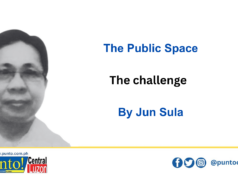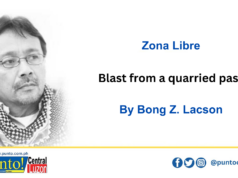WHAT HAPPENS when the convergence of modernization, technological advancement and urban migration stand in the way of the observance of Lent among the country’s younger generation? Most likely, it will lead to the slow but sudden death of a season that has long been a tapestry of rituals that reflect both a people’s deep faith and a nation’s rich cultural identity.
While most of today’s youth look forward to the Holy Week as the most opportune time to beat the heat by going to some picture-perfect summer getaways, there is now a growing number who prefer to stay home or go back to their hometowns and immerse themselves in various customs and practices.
If Barangay San Pedro Cutud in the City of San Fernando has the re-enactment of Jesus Christ’s crucifixion as its highlight, the town of Macabebe has “Estatwang Mabiye.” Started by the Everybody’s Club of Barangay San Isidro in 1956, the live dioramas create replicas of the Stations of the Cross and various scenes in the life, passion and death of Jesus Christ. For almost three hours during the Good Friday procession, the young and the old members of the various clubs are dressed in colourful costumes, create a tableau, stand or lie motionless and transform the procession route to a poignant pilgrimage path.
Whereas before it was difficult to involve the Gen Z’s in this activity, now they even volunteer themselves to take part in any way they can. I see them doing the props, the costumes and most of them have taken on the roles previously played by their parents, or older members of their respective families.
Without a doubt, the infusion of modern technology has reshaped daily life, especially among the youth. While most of us have been accustomed to attending Masses via Facebook live streaming, many now find themselves going to the churches to attend and experience the many liturgical activities of the parish. This return to in-person participation has led to the renewed understanding of their faith and appreciation of their town’s cultural rituals.
As for urban migration, young people who left their homes for better opportunities in the big cities now find themselves longing for rural traditions. They must have realized that the hustle of city life offers little room for the communal nature of Lenten observances. They now find themselves attending the Domingo de Ramos, Misa ning Tawling Apunan, Tangal, Sabado de Gloria, Salubong. and Domingo de Pascua. They relive the scenes of their youth, and sing the hymns and chants either in Kapampangan or Latin, the very songs they grew up singing while in the company of the rest of the community.
The Lenten season is a period of reflection, sacrifice, and renewal. The undeniable sense of community and needed continuity are fostered as engaging in Lenten traditions allows individuals to participate in a collective narrative of faith. What makes these truly unique is that they are more than religious observances; they are definitely cultural cornerstones that bind communities together.
Modernization is here to stay. Ergo, we should all support the moves to preserve cultural heritage. To achieve this, our local governments must fund initiatives to document oral histories, schools must integrate traditional practices into the curriculum, and we should all harness technology to showcase these rituals. The key is for all of us to collaborate to find innovative ways to celebrate and perpetuate these traditions, ensuring they evolve without losing their essence. Our collective and conscious efforts to honor and sustain our Lenten traditions will enrich both the spiritual and cultural fabric of our community, and offer future generations a tangible connection to their rich heritage.





